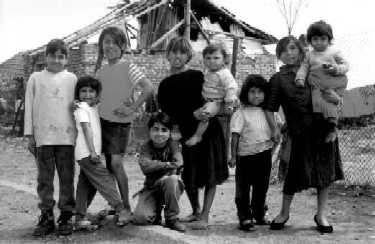Roma Rights of the Child
03 October 2000
The Convention on the Rights of the Child (CRC) was adopted by the General Assembly of the United Nations on November 20, 1989, as the Berlin Wall was being pulled down. On the occasion of the ten-year review of states' compliance with obligations under the CRC in order to prepare for a special session of the UN General Assembly on Children in September 2001, this issue of Roma Rights is devoted to the theme of Romani children's rights.
With 54 Articles, the CRC is one of the most comprehensive international rights documents in existence, its language rich and comprehensive, its engagement with the issue of children's rights close to total. All but two countries in the world - Somalia and the United States - had signed the CRC as of the end of 1999. Yet as the material offered by our authors in this issue of Roma Rights indicates, the issue of children's rights remains at the frontier of rights discourse - children have traditionally been a group whose rights are limited. Activists from the non-governmental organisation Save the Children lead the section that follows with an engagement with the topic of child participation and its implications for Romani children and youth. Yet for most of our authors, like the great past illuminators of the hell that can be childhood - William Blake, Charles Dickens, George Orwell, to name only a few - the issue of children's rights has engaged primarily creativity in the description of its abuses, and predominantly abuses by institutions.
 |
| Romani children in Biala Slatina in northern Bulgaria, April 15, 2000. As in other countries of the region, it has been noted that a higher percentage of Romani women than men have never been to school or drop out before completing the 4th grade, with figures at 29% and 11% respectively according to a forthcoming report by the World Bank. Likewise, overall educational achievement levels are lower amongst Romani girls than boys. Photo: Jennifer Tanaka |
In the pages that follow, Jennifer Tanaka, Angéla Kóczé, and Daniella Mercier describe abuses of the right to education - especially segregation, denial of the right to a meaningful education and exclusion. Kathryn D. Carlisle details Italian authorities' on-going efforts to remove Romani children from their families in Italy, and the testimony section gives voice to one victim of such abuses in Hungary. Marty Rajandran of UNICEF offers suggestions for non-governmental organisations and concerned individuals to participate in raising Roma Rights concerns within the framework of the ten-year review. The ERRC offers a Romani-language version of the Convention on page 83. The official English version is available on the Internet website of the United Nations High Commissioner for Human Rights at: http://www.unhchr.ch/html/menu3/b/k2crc.htm.




